#conveyor belts
Photo

A Muppets Christmas: Letters to Santa (2008)
#a muppets christmas: letters to santa#letters to santa#the muppets#gonzo#miss piggy#jesse l martin#mail#post office#conveyor belts#christmas special#muppet#muppets#gif#muppet gif#muppets gif#my gif
158 notes
·
View notes
Text
The Arctic ice sheets are melting. Many already understand that is will lead to sea-level rise, but there is another effect that this may have on the world. In the past the melting of large masses of ice in the Artic Ocean has happened before and they had massive effects on the climate. Europe cooled dramatically, especially in winter, and Asia showed signs of desertification. Climatologists believe that these temporary climatic shifts may happen again now that the Arctic ice sheets are melting due to human driven climate change.
You may wonder how melting ice sheets may make parts of the world cooler. Some might know of the albedo effect. The white of the ice reflects the energy of the sun back into space. As the ice melts there is less white to reflect the energy and more heat remains on Earth. If the heat is increasing, then how can parts of the world become cooler? This is because the chain reaction that leads to potential cooling isn’t linked to the amount of ice left, but the amount melted. When ice melts, fresh water is added to the ocean and this influences how the ocean functions.
Oceanic circulation is often called a conveyor belt by oceanographers. Ocean waters rise in the Northern Pacific Ocean and the Indian Ocean. Then they travel across the surface to eventually sink again in the North Atlantic Ocean. From there they travel across the bottom of the ocean back to the Pacific and the Indian Oceans. Figure 1 shows this circulation. It takes centuries for waters to travel along the entire conveyor belt, but if the circulation gets disturbed the effects may be noticeable quite a bit faster. This may be a good hundred years, but that is quite fast on a geological time scale.

Figure 1: This map shows a simplified image of the Great Ocean Conveyor Belt. Arrows indicate the direction in which the water travels. Blue indicates deep water currents and red indicates surface water currents (Source: IPCC 1996, based on Broecker (1987)).
So what happens if a lot of fresh water from icebergs gets added in the area where the waters sink? To answer this question we need to know the mechanisms behind the sinking of these waters or, as it is also called, the North Atlantic Deep Water formation. The warmer waters that arrive from the south are saltier without being heavy. This is due to the different properties water can have at different temperatures. As the waters travel north they become colder. The higher salt content causes the waters to become heavier and eventually sink. Much like water evaporates more when the air is warm and then falls down as rain when the air cools. When fresh water is added to these waters their salt concentration decreases and therefore the speed at which they sink decreases as well.
Scientists have measured a slowing down of North Atlantic Deep Water formation in certain places in recent years. They have also observed mass melting of icebergs in the distant past. These are called Heinrich events and can be observed in oceanic sediment by the large rocks that fell as the icebergs melted. Both computer models and natural records from prehistoric times show a chain of events caused by this melting and subsequent slowing and/or stopping of the North Atlantic Deep Water formation. Figure 2 shows a simplified map of climate anomalies from an event that happened 8,200 years ago. Lands near the North Atlantic cooled down, especially during winter, Africa and Asia saw decreases in rain, and the Americas suffered from increased winds.

Figure 2: Summary map of climate anomalies during the 8k event (from Alley & Argustsdottir (2005)).
But how can one part of this circulation cause effects as far away as India? Lets go back to the name ‘conveyor belt’. If you stick a screwdriver in the place where the conveyor belt at a supermarket cash registry disappears down, the whole belt will stop moving. The same applies to the oceanic conveyor belt to a degree. If no more water sinks in the North Atlantic Ocean the rest of the system will slow down and stop as well. The oceans have a massive influence on the climate of the world, especially on landmasses near these oceans. Warm waters from the equatorial region move north and release their heat (also shown in figure 1). During winters this means that temperatures do not get as low as they could. If no more warm waters move north this influx of warmth is also gone. North America and Europe suffer much colder winters in this scenario. Models and prehistoric records have shown the formation of sea ice in Europe in these conditions. In Africa and Asia monsoons are very important for the formation of rain. Monsoons form due to the balance of ocean temperatures and land temperatures. The slowing and/or stopping of the ocean conveyor belt will change this balance and the characteristics of the monsoons will change, leaving Africa and Asia drier than before.
However, we shouldn’t panic and start worrying about apocalyptic winters in Europe or massive crop failures in Africa and Asia just yet. The Earth’s climate is a system about balances. A balance can be upheaved, but as long as certain thresholds aren’t passed the balance will be restored. The slowing of North Atlantic Deep Water formation that has been measured in certain spots recently doesn’t mean that the whole system will be messed up. In other areas the waters are still sinking at regular speeds and scientists haven’t measured any of the other waters moving towards these sinking spots slowing down. Even if it came to it, the conveyor belt can restart and speed back up again, as it has in the past. This article isn’t written for the purpose of scaremongering. It is a look at a truly tiny part of the massive system of checks and balances that influence the climate on Earth. How complicated it is to predict how the human driven climate change will effect the Earth in the long term. There is a reason why we changed from talking about Global Warming to Climate Change. In the past Heinrich events and the climatic changes linked to it were most often observed at the end of ice ages. The Earth was warming, but would temporarily cool down again. However, the forcing behind the warming was too strong and the Earth would continue to warm. If the forcing had not been as strong, the Earth could have gone back to the way it had been before (the ocean conveyor belt never stayed still). This is why we talk about thresholds and tipping points. The Earth can regain her balance. It will take a long time, but we can help her along the way.
If you want to read more about the North Atlantic ‘conveyor belt’ and the associated climatic changes a good place to start is: Alley, R. B. (2007). Wally was right: Predictive ability of the North Atlantic" Conveyor belt" hypothesis for abrupt climate change. Annual Review of earth and Planetary sciences, 35(1), 241-272.
Reference:
Alley, R. B., & Ágústsdóttir, A. M. (2005). The 8k event: cause and consequences of a major Holocene abrupt climate change. Quaternary Science Reviews, 24(10-11), 1123-1149.
#climate change#climate crisis#climateaction#crisis#environmental activism#activism#climate activism#activist#climate science#climate#weather#glacier#atlantic records#conveyor belts#arctic#ice sheets#ice caps#melting#global climate change#global
93 notes
·
View notes
Text
Took my meds on a sunday morning and 8h later, 3 full rework later, the non spaghetti conveyors for my iron processing units

Gosh that game is so much fun.
#adhd#adhd adult#adhd brain#adhd life#adhd meds#hyperfocus#satisfactory#gaming#conveyor belts#spagehetti
25 notes
·
View notes
Text
Kura Revolving Sushi Bar - Edison and Fort Lee NJ
Restaurant review
I totally get and appreciate the novelty of conveyor-belt sushi. It's exciting watching the dishes glide by. You get to pick stuff that looks good, like a buffet, but you don't have to move - the food comes to you. And with the touchscreen at each table, you get to order anything from the full menu and it is delivered via a second conveyor directly to your table. Super cool.
However: (and these are big howevers)
1. It's expensive. We had lunch for 6 people (4 adults, 2 children) and the bill came to $310. Adding a tip brought it to $360. ($60 per person). That's about double what we would have paid on a weekend at an all-you-can-eat Japanese restaurant. You pay $3.55 per plate, plus any extras (drinks, special orders, etc). But there's only a few bites on each tiny plate. It's not uncommon to eat 10-20 plates per person, and they add up.
2. The sushi is just not that good. I mean, it's fine. Not exceptional. Not inspired. Just fine. There's not a huge selection of either maki or nigiri either on the full menu, and there's even less on the conveyor. We had a few things that were not great (eg the takoyaki were uncooked inside). A few standouts: the wagyu nigiri was really tasty and has great smoky notes; the ramen broth is very tasty and a rival of other dedicated ramen restaurants.
3. You can't customize *anything*. Don't want the spicy mayo? Extra green onions? Allergic to sesame seeds? Too bad. There's no way to customize anything on the touchscreen. (Full disclosure, we didn't ask a human server, so maybe we could have gotten it that way )
4. The variety on the conveyor depends highly on where you are seated in the dining room. The plates are filled in the kitchen and progress in a line past every table without being refilled until they reach the kitchen again. Lowest-numbered tables eat first. (Maybe tip your host before being seated?).
** And there's no sashimi anywhere in the restaurant. So if you don't eat rice, you're pretty much SOL. **
Those are the biggest challenges i had myself.
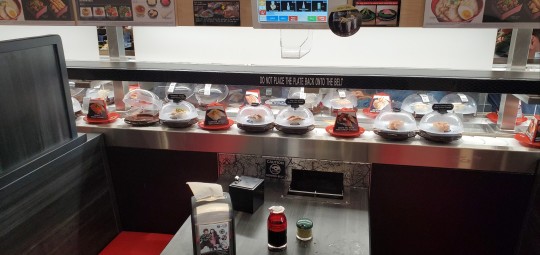
A few other nits:
- the servers weren't as attentive as i would have liked, despite a dedicated call button on the touchscreen
- the touchscreen itself was sort of hard to access. High up above the table, it put the two people next to it responsible for the whole table's orders.
- tables fit exactly four. Don't try to bring a large group. They'll try to make it work, but it's not at all comfortable. In fact, the whole place is kind of snug.
I don't want the overall impression here to be incredibly negative. There's lots of positive here: the food is tasty, no challenges with cleanliness or decor. Everything worked - which is saying a lot given the amount of automation required to make this place work. And it's cute and clever!
Make sure you get the app to "virtually" get online otherwise you're facing 1-2 hours of waiting.

My takeaway is simple: if you like Japanese food are aren't picky about what you get (and don't have any food allergies), it's probably worth a trip for the novelty alone. But i suspect after you're done, you won't want a second visit.
Happy Eating!
9 notes
·
View notes
Text

Conveyor Belt at RSPB Hanson Ouse Fen Nature Reserve
#conveyor belts#cambridgeshire#infrastructure#derelict#cloudyday#cloudysky#my photos#photography#rspb
4 notes
·
View notes
Photo
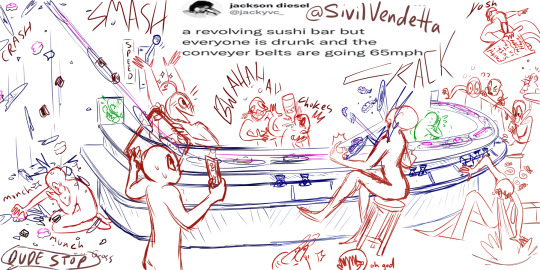
I was asked to doodle this tweet, you are welcome to use it with credit for your own characters
#twitter#twitterpost#twitterpostillustrated#sushi#conveyor belts#sushiconveyerbelt#chaos#ych open#idiots#drunk
4 notes
·
View notes
Text
Food Grade Conveyor Belt is a specially designed belt used in the food processing and handling industry to transport food products from one point to another. These specialized belts are designed to transport food products safely and efficiently, minimizing the risk of contamination. For more details, visit our website.
1 note
·
View note
Text
Industrial Workhorses: Perforated Sheet & Conveyor Belt
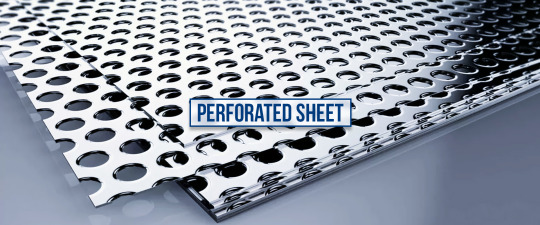
The backbone of many industries relies on unseen heroes – the workhorses that keep things moving and functioning efficiently. Perforated sheet, Wire Conveyor Belt, and conveyor belts are some such essential components, playing crucial roles in various applications. This article explores these industrial workhorses, their functionalities, and how they contribute to smooth operations.
Perforated Sheets: Precise Control of Air, Light, and Flow
Perforated sheets are metal plates with strategically placed holes of various sizes and patterns. These holes allow for controlled air, light, or liquid flow while maintaining the structural integrity of the sheet. Their versatility makes them applicable across diverse industries.
Applications:
Air and ventilation: Perforated sheets are used in architectural facades, grilles, and machine enclosures to allow for air circulation and prevent overheating.
Filtration: They serve as sieves and filters in various processes, separating materials based on size.
Noise Control: Perforated sheets with specific hole patterns can dampen sound, making them ideal for engine compartments and soundproofing applications.
Light Diffusion: They can be used to create even light distribution in lighting fixtures while maintaining structural support.
Benefits:
Versatility: Perforated sheets can be customized in terms of material, hole size, pattern, and thickness, making them adaptable to various needs.
Strength and Durability: They offer a strong and long-lasting solution for demanding industrial applications.
Weight Reduction: Compared to solid sheets, perforated sheets are lighter, reducing overall weight and improving efficiency.
Wire Conveyor Belt and Conveyor Belts
Conveyor systems are the arteries of many industries, transporting materials from one stage of production to another. This vital function is made possible by two key components Wire Conveyor Belt and Conveyor Belt.
Wire Conveyor Belt: These are high-tensile wires woven or welded together to form a strong, flexible mesh. They are used in belt conveyor systems, providing a stable platform for material movement.
Applications:
Light to medium-duty conveying: They are ideal for applications involving lightweight or medium-weight materials like food items, electronics, and pharmaceuticals.
Drainage and air circulation: The open mesh structure allows for drainage of liquids and air circulation, preventing product build-up and ensuring optimal hygiene.
Heat resistance: Wire Conveyor Belt can be made from heat-resistant materials to withstand high temperatures in applications like baking and drying processes.
Conveyor Belts: These are continuous loops of material, typically rubber or plastic, that transport materials across a defined path. They come in various types, each suited for specific applications.
Applications:
Bulk material handling: Conveyor belts are used in industries like mining, construction, and agriculture to transport large quantities of bulk materials like gravel, coal, and grains.
Inclined conveying: Certain types of conveyor belts are designed to transport materials on inclines, eliminating the need for additional equipment.
Food processing: Conveyor belts made from food-grade materials are used in food processing and packaging lines to ensure hygiene and product safety.
Benefits:
Efficiency: Conveyor systems automate material handling, improving efficiency and productivity.
Versatility: A wide range of conveyor belts and wires cater to specific needs, from light to heavy-duty applications and various material types.
Durability: Modern conveyor belts and wires are built to withstand demanding industrial environments.
Jeetmull Jaichandlall (P) Ltd.: Leading the Way in Industrial Supplies
Jeetmull Jaichandlall (P) Ltd., a leading manufacturer and supplier based in Kolkata, West Bengal, India, exemplifies the commitment to providing high-quality perforated sheets, Wire Conveyor Belt, and conveyor belts. With over eight decades of experience, they understand the importance of these workhorses in industrial operations. Their dedication to quality and innovation ensures their products meet the diverse needs of their customers.
Conclusion
Perforated sheets, Wire Conveyor Belt, and conveyor belts, though often unseen, are essential components in various industries. Their functionality, versatility, and durability contribute significantly to efficient production processes. As companies like Jeetmull Jaichandlall (P) Ltd. continue to provide high-quality solutions, these industrial workhorses will keep powering smooth operations across the globe.
#Wire Conveyor Belt#Conveyor Belt#perforated sheet manufacturers#perforated sheet manufacturers in india#wiremesh#perforated sheet#wire mesh manufacturers#wire mesh#perforated sheets#conveyor wires#conveyor belts#industrial supplies#material handling
0 notes
Text
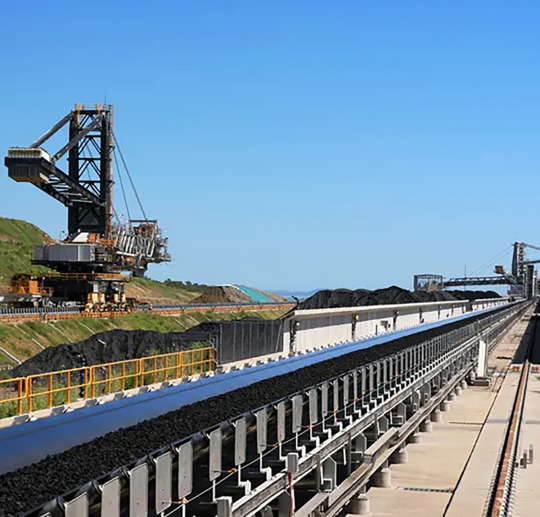
Premium Conveyor Belts manufactured by continental belting private limited. highest quality conveyor belts.
#conveyor belts#rubber conveyor belts#conveyor belts in india#general duty conveyor belt#heavy duty conveyor belts
1 note
·
View note
Text
Hoverdale UK Ltd

Hoverdale is a world-class provider of hard metals & wear-resistant products, conveyor belt products and equipment, including Conveyor belt scraper cleaners . We keep waste recycling, biofuel, power generation, wastewater treatment, sea aggregates, vinyl, food, mining, tunnelling and glass plants moving, maximising the total cost of ownership of any bulk handling environment.
Business hours: 6:30 am–5 pm (Monday to Friday)
Business Since: 2008
Contact Us;
Address: Unit 5, Liberty Way, Attleborough Fields Industrial Estate, Nuneaton, Warwickshire, CV11 6RZ, United Kingdom
Phone: 024 7509 9836
Website: https://www.hoverdale.com/
Business Email: [email protected]
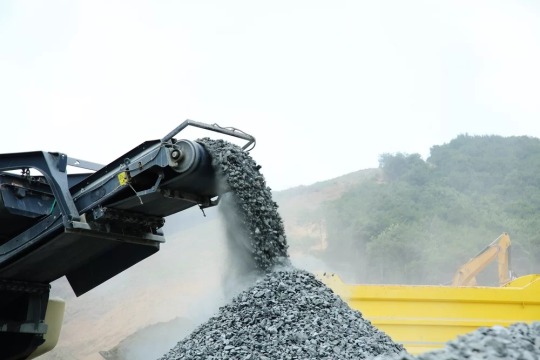
1 note
·
View note
Text

I think I've let a certain youtuber influence me too much.
GAME: Satisfactory
PLATFORM: PC
1 note
·
View note
Text
Matters needing attention in the use of conveyor belts
1. It is strictly forbidden to use straps of different types and specifications together.
2. Prevent folding and pressing of hard objects during use. Unused conveyor belts should be coiled and packaged.
3. The direction of transporting materials and the speed of material falling are consistent with the direction and speed of the belt.
4. Before use, generally start the machine empty to avoid overloading of the motor and slipping of the conveyor belt. Before stopping the machine, all the materials on the belt should be unloaded.
5. The tension should not be too large during use, at least ensure that there is no slippage between the belt and the driving roller and that the material is not overloaded.
6. Do not make the belt run off-track or meander during conveying, and it should be adjusted in time.

7. If the phenomenon of slippage or unmoving occurs during use, the fault should be eliminated in time, the tensioning system should be adjusted, and the elastic device should be kept flexible.
conveyor belts
0 notes
Text

Are you ready to revolutionize your industrial processes? Look no further than the cutting-edge PVC & PU Conveyor Belts from Conveyor's Joint! Our innovative Steel-Tire Conveyor Belt promises to redefine efficiency and reliability in the world of material handling.
0 notes
Text
Exploring the History of the Conveyor Belt!
Are you finding the History of the Conveyor Belt? We provide all information on conveyor Belts and the primary material details that are used to create belt fabric. Nowadays, the conveyor belts supplier uses various techniques, materials, and designs to make it. To know more about belt fabric manufacturers, visit our blog!

#belt fabric#belt fabric manufacturers#belt fabric supplier#conveyor belts supplier#flat belts supplier#conveyor belts
0 notes
Text
Urgent Alert: Prepare for Explosive Growth in the Industrial Fabrics Industry by 2032: AMR
0 notes
Text
vimeo
Find out the key features and applications of Heat Resistant Conveyor Belt in this amazing video shared by Continental Belting Pvt Ltd. We provide world class conveyor belts to our customers at reasonable prices in India. For more details, connect with us.
#Heat Resistant Conveyor Belt#manufacturers#conveyor belts#exporters#Heat Resistant Conveyor Belt suppliers#industrial conveyor belts#Vimeo
0 notes